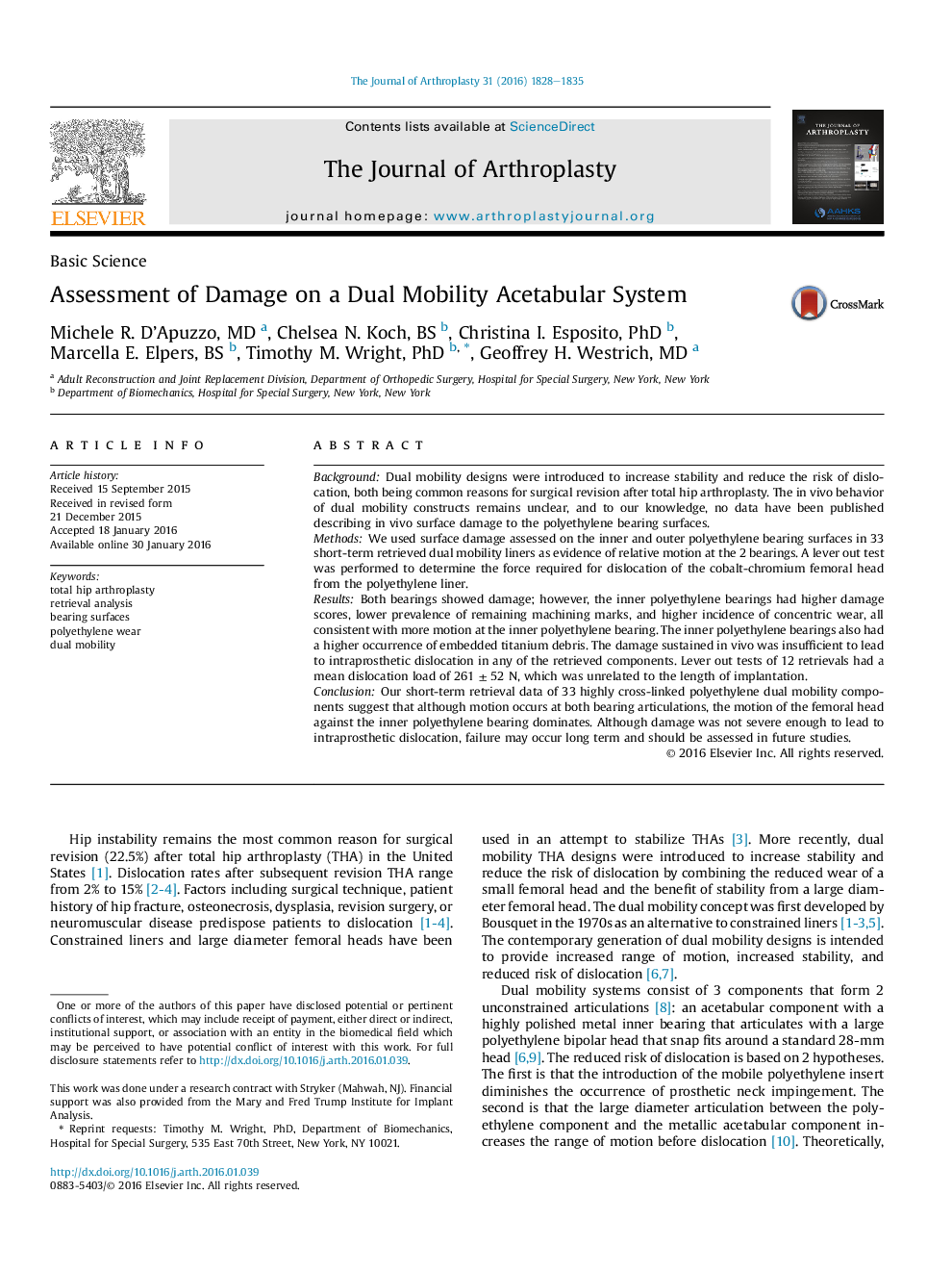| Article ID | Journal | Published Year | Pages | File Type |
|---|---|---|---|---|
| 6208656 | The Journal of Arthroplasty | 2016 | 8 Pages |
BackgroundDual mobility designs were introduced to increase stability and reduce the risk of dislocation, both being common reasons for surgical revision after total hip arthroplasty. The in vivo behavior of dual mobility constructs remains unclear, and to our knowledge, no data have been published describing in vivo surface damage to the polyethylene bearing surfaces.MethodsWe used surface damage assessed on the inner and outer polyethylene bearing surfaces in 33 short-term retrieved dual mobility liners as evidence of relative motion at the 2 bearings. A lever out test was performed to determine the force required for dislocation of the cobalt-chromium femoral head from the polyethylene liner.ResultsBoth bearings showed damage; however, the inner polyethylene bearings had higher damage scores, lower prevalence of remaining machining marks, and higher incidence of concentric wear, all consistent with more motion at the inner polyethylene bearing. The inner polyethylene bearings also had a higher occurrence of embedded titanium debris. The damage sustained in vivo was insufficient to lead to intraprosthetic dislocation in any of the retrieved components. Lever out tests of 12 retrievals had a mean dislocation load of 261 ± 52 N, which was unrelated to the length of implantation.ConclusionOur short-term retrieval data of 33 highly cross-linked polyethylene dual mobility components suggest that although motion occurs at both bearing articulations, the motion of the femoral head against the inner polyethylene bearing dominates. Although damage was not severe enough to lead to intraprosthetic dislocation, failure may occur long term and should be assessed in future studies.
